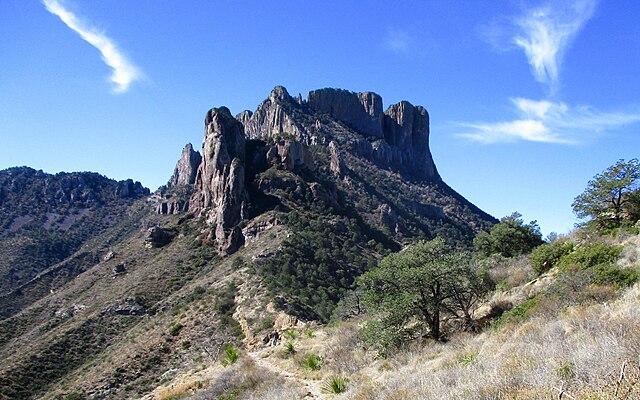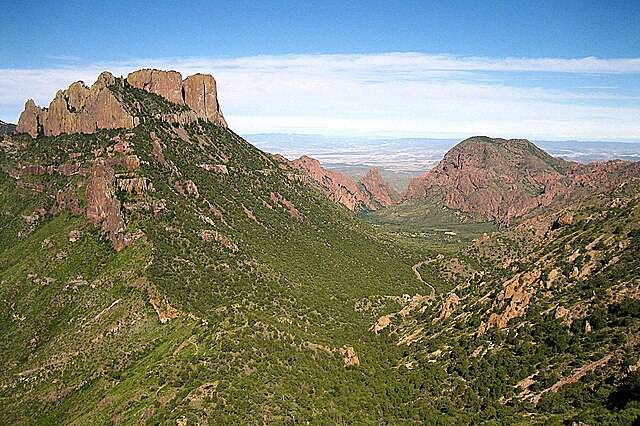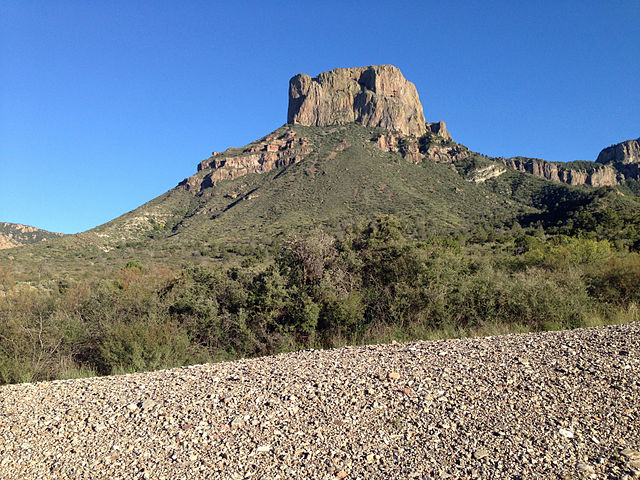Have you ever wondered what it’s really like to experience the weather in Casa Grande, Arizona? This desert city offers one of the most distinctive climate patterns in the United States, where scorching summers meet pleasantly mild winters. Whether you’re planning a move, considering a visit, or simply curious about this fascinating weather system, you’ve come to the right place.
Casa Grande’s weather isn’t just about numbers on a thermometer – it’s about understanding how the Sonoran Desert shapes daily life, influences local culture, and creates both challenges and opportunities for residents and visitors alike. Let’s dive deep into the intricate world of Casa Grande’s climate patterns.
Understanding Casa Grande’s Geographic Location and Climate Zone
Casa Grande sits in a unique position that significantly influences its weather patterns. The city’s location in south-central Arizona places it squarely within the Sonoran Desert, one of North America’s most biodiverse desert ecosystems. This positioning creates a climate that’s both predictable and occasionally surprising.
Where Casa Grande Sits in the Sonoran Desert
The Sonoran Desert stretches across Arizona and into Mexico, creating a vast expanse of arid landscape that directly impacts Casa Grande’s weather. This desert location means the city experiences what meteorologists call a “hot desert climate” or BWh classification under the Köppen climate system.
The desert’s influence extends beyond simple temperature readings. It affects humidity levels, wind patterns, and seasonal weather variations. Casa Grande benefits from the desert’s natural air conditioning effect during winter months, while experiencing its intense heat-trapping properties during summer.
Elevation and Its Impact on Weather Patterns
Standing at approximately 1,400 feet above sea level, Casa Grande’s elevation plays a crucial role in its weather patterns. This moderate elevation helps temper some of the extreme heat you might expect from a desert location, while still maintaining the region’s characteristic dry climate.
The elevation also influences temperature variations between day and night. During winter months, this elevation can contribute to surprisingly cool mornings and evenings, even when daytime temperatures remain comfortable.
Casa Grande’s Seasonal Weather Patterns
Understanding Casa Grande’s seasons requires thinking beyond traditional four-season patterns. The desert climate creates distinct weather periods that don’t always align with calendar seasons, making it essential to understand what each period brings.
Spring Weather in Casa Grande (March-May)
Spring in Casa Grande represents one of the most pleasant times of year. The harsh winter cold hasn’t yet arrived, and the brutal summer heat remains months away. This season offers a perfect balance that makes it ideal for outdoor activities and exploration.
Temperature Ranges and Rainfall
During spring months, daytime temperatures typically range from the mid-70s to mid-80s Fahrenheit. Nighttime temperatures can drop into the 50s and 60s, creating comfortable sleeping conditions and pleasant evening activities.
Rainfall during spring remains minimal, with most months receiving less than an inch of precipitation. This low rainfall contributes to the season’s appeal, as visitors and residents can plan outdoor activities without worrying about weather disruptions.
What to Expect During Spring Months
Spring brings blooming desert plants, making it an excellent time for hiking and nature photography. The weather remains stable and predictable, with sunny skies dominating most days. Wind speeds stay moderate, and humidity levels remain low, creating comfortable conditions for extended outdoor activities.
Summer Weather in Casa Grande (June-August)

Summer in Casa Grande demands respect and preparation. This season brings some of the most extreme weather conditions in the United States, with temperatures that can challenge even longtime desert residents.
The Intense Heat of Arizona Summers
Summer temperatures in Casa Grande regularly exceed 100°F, with many days reaching 105-110°F. The record high temperature reached 122°F, demonstrating the extreme conditions possible during peak summer months.
These temperatures aren’t just uncomfortable – they can be dangerous. The dry desert air can be deceiving, as sweat evaporates quickly, making it easy to become dehydrated without realizing it. Understanding and respecting these conditions becomes essential for anyone spending time in Casa Grande during summer.
Monsoon Season and Thunderstorms
Casa Grande’s monsoon season, typically occurring from July through September, brings dramatic weather changes. These storms can appear suddenly, bringing heavy rainfall, strong winds, and impressive lightning displays.
Monsoon storms provide much-needed relief from the heat, but they also create new challenges. Flash flooding can occur quickly, and dust storms often precede the arrival of storm systems. These weather events add complexity to summer weather patterns and require careful attention to weather forecasts.
Fall Weather in Casa Grande (September-November)
Fall represents a transitional period when Casa Grande’s weather begins its gradual shift toward more moderate conditions. This season offers relief from summer’s intensity while maintaining the desert’s characteristic sunny skies.
The Relief of Cooler Temperatures
September still brings hot temperatures, but October and November show significant cooling. Daytime temperatures drop from the 90s in September to the 70s and 80s in November. This cooling trend makes fall increasingly popular for outdoor activities and events.
The temperature drop occurs gradually, allowing residents and visitors to adjust comfortably to changing conditions. Nighttime temperatures become particularly pleasant, often dropping into the 60s and 70s.
Best Time for Outdoor Activities
Fall weather conditions make this season ideal for hiking, camping, and other outdoor pursuits. The extreme heat has subsided, but winter cold hasn’t arrived. Clear skies and low humidity create perfect conditions for exploring Casa Grande’s natural surroundings.
Winter Weather in Casa Grande (December-February)
Winter in Casa Grande defies many people’s expectations about desert weather. While summers are brutally hot, winters can be surprisingly mild and occasionally even chilly.
Mild Winters and Perfect Weather
Winter daytime temperatures typically range from the 60s to low 70s, creating ideal conditions for outdoor activities. Many residents consider winter the best time to live in Casa Grande, as the weather allows for comfortable outdoor living without the extreme conditions of other seasons.
Sunshine remains abundant during winter months, with clear skies dominating the weather pattern. This combination of mild temperatures and abundant sunshine attracts many winter visitors, particularly from colder northern climates.
Rare Cold Snaps and Frost Conditions
Occasionally, Casa Grande experiences cold snaps that can bring temperatures near or below freezing. These events are rare but can impact local agriculture and require residents to protect sensitive plants and outdoor plumbing.
Frost can occur during the coldest winter nights, particularly in January and February. While these conditions are unusual, they remind residents that desert weather can still surprise even longtime locals.
Monthly Weather Breakdown for Casa Grande

Understanding Casa Grande’s weather requires examining each month’s unique characteristics. Monthly variations help predict what to expect and plan accordingly for work, recreation, and daily life.
January Through March Weather Patterns
January represents Casa Grande’s coolest month, with average highs around 67°F and lows around 39°F. February brings slight warming, while March signals the beginning of the warming trend that continues through summer.
These months receive minimal rainfall, typically less than an inch per month. Clear skies dominate, making this period excellent for outdoor activities and solar energy production. Wind speeds remain moderate, contributing to comfortable conditions.
April Through June Climate Conditions
April through June shows Casa Grande’s rapid warming trend. April starts with pleasant temperatures in the 70s and 80s, while June brings the first truly hot weather of the year, with temperatures reaching the upper 90s and low 100s.
This period marks the transition from comfortable spring weather to challenging summer conditions. Rainfall remains minimal, and humidity stays low. These months require increasing attention to heat safety and preparation for summer’s extreme conditions.
July Through September Weather Extremes
July through September represents Casa Grande’s most challenging weather period. July and August bring the year’s highest temperatures, regularly exceeding 105°F. September begins showing signs of relief, but temperatures often remain above 100°F.
Monsoon season dominates this period, bringing dramatic thunderstorms and the year’s highest rainfall totals. These storms can produce heavy rain, strong winds, and impressive lightning displays, but they also provide relief from the intense heat.
October Through December Seasonal Changes
October through December shows Casa Grande’s gradual cooling trend. October maintains warm temperatures in the 80s and 90s, while November and December bring increasingly pleasant conditions.
This period marks the return of comfortable outdoor weather and the beginning of the tourist season. Rainfall remains minimal, and clear skies return as the dominant weather pattern. These months offer ideal conditions for exploring Casa Grande’s attractions and natural areas.
Extreme Weather Events in Casa Grande
Casa Grande’s desert location exposes it to several types of extreme weather events that can impact daily life and require preparation and awareness.
Dust Storms and Haboobs
Dust storms represent one of Casa Grande’s most dramatic weather phenomena. These storms, called haboobs when they reach significant size, can reduce visibility to near zero and create hazardous driving conditions.
Haboobs typically occur during summer months and often precede monsoon storms. They develop when thunderstorm downdrafts hit the ground and spread outward, picking up dust and debris. These walls of dust can reach heights of several thousand feet and stretch for dozens of miles.
Flash Floods and Monsoon Dangers
Casa Grande’s desert location makes it vulnerable to flash flooding during monsoon season. The hard-packed desert soil cannot absorb heavy rainfall quickly, causing water to flow rapidly across the landscape.
Flash floods can occur in areas that appear completely dry, as water flows from distant storm systems. Understanding flood-prone areas and avoiding travel during heavy rainfall becomes essential for safety during monsoon season.
Record-Breaking Temperatures
Casa Grande has experienced record-breaking temperatures that demonstrate the extreme conditions possible in the desert climate. The record high temperature of 122°F shows the potential for dangerous heat conditions.
These extreme temperatures can create life-threatening conditions for unprepared individuals. Understanding heat safety, staying hydrated, and limiting outdoor exposure during peak heat hours becomes essential for surviving extreme temperature events.
How Casa Grande Weather Affects Daily Life
Casa Grande’s weather patterns significantly influence how residents live, work, and recreate throughout the year. Understanding these impacts helps explain local culture and lifestyle choices.
Outdoor Activities and Recreation
Weather patterns dictate when and how residents enjoy outdoor activities. Winter and spring months see increased hiking, camping, and outdoor events, while summer activities often shift to early morning or evening hours.
Many residents adopt seasonal activity patterns, embracing outdoor pursuits during cooler months while focusing on indoor activities during summer’s peak heat. This seasonal lifestyle affects everything from sports schedules to social gatherings.
Agriculture and Farming Impact
Casa Grande’s agricultural sector depends heavily on weather patterns and seasonal changes. The region’s farming operations must adapt to extreme heat, limited rainfall, and occasional frost conditions.
Growing seasons align with weather patterns, with most crops planted to avoid summer’s extreme heat. Irrigation becomes essential, and farmers must plan carefully around monsoon season and potential frost events.
Energy Costs and Home Cooling
Casa Grande’s weather creates significant energy demands, particularly during summer months. Air conditioning costs can represent a major portion of household budgets, as maintaining comfortable indoor temperatures requires substantial energy consumption.
Many residents adopt energy-saving strategies, including adjusting thermostats, using fans, and modifying daily routines to minimize cooling costs. Understanding these impacts helps newcomers budget appropriately for living in Casa Grande.
Climate Change and Future Weather Trends

Casa Grande’s weather patterns are evolving as climate change affects desert regions worldwide. Understanding these changes helps residents and visitors prepare for future conditions.
Historical Weather Pattern Changes
Historical weather data shows gradual changes in Casa Grande’s climate patterns over recent decades. Average temperatures have increased slightly, and extreme heat events have become more frequent and intense.
Rainfall patterns have also shown variations, with some years experiencing more intense monsoon seasons while others remain drier than historical averages. These changes affect water resources, agriculture, and daily life planning.
Projected Future Climate Conditions
Climate projections suggest Casa Grande may experience continued warming trends, with summer temperatures potentially becoming more extreme. These changes could affect the duration and intensity of the comfortable winter and spring seasons.
Understanding these potential changes helps residents and planners prepare for future conditions. Adaptation strategies may include improved cooling systems, water conservation measures, and modified outdoor activity scheduling.
Planning Your Visit: Best Times to Experience Casa Grande
Understanding Casa Grande’s weather patterns helps visitors plan optimal travel times and pack appropriately for their desert experience.
Tourist Season Recommendations
The best time to visit Casa Grande typically falls between October and April, when temperatures remain comfortable for outdoor activities and sightseeing. Winter months offer the most pleasant conditions, with mild temperatures and abundant sunshine.
Summer visits require careful planning and preparation for extreme heat. Early morning and evening activities work best, while midday hours should be spent in air-conditioned environments. Monsoon season adds complexity but also provides opportunities to witness dramatic desert storms.
What to Pack for Different Seasons
Packing for Casa Grande depends heavily on travel season. Winter visits require layers for temperature variations, while summer visits demand heat protection including hats, sunscreen, and light-colored clothing.
All seasons require sun protection, as the desert’s high elevation and clear skies create intense UV exposure. Comfortable walking shoes, plenty of water, and weather-appropriate clothing ensure safe and enjoyable visits regardless of season.
Conclusion
Casa Grande’s weather represents one of nature’s most fascinating climate systems, where extreme conditions create both challenges and opportunities for residents and visitors. From scorching summers that test human endurance to mild winters that attract visitors from across the country, this desert city offers a weather experience unlike anywhere else in the United States.
Understanding Casa Grande’s weather patterns isn’t just about knowing when to pack a jacket or turn on the air conditioning – it’s about appreciating how climate shapes culture, influences daily decisions, and creates the unique character of desert living. Whether you’re planning a visit, considering a move, or simply curious about this remarkable climate, Casa Grande’s weather tells a story of adaptation, resilience, and the incredible diversity of American landscapes.
The desert climate may seem harsh to outsiders, but for those who understand and respect its patterns, Casa Grande offers year-round sunshine, stunning natural beauty, and a lifestyle that embraces the rhythms of the Sonoran Desert. As climate change continues to evolve weather patterns worldwide, Casa Grande’s experience provides valuable insights into desert living and the importance of adapting to our changing environment.
Frequently Asked Questions
1. What is the hottest month in Casa Grande, Arizona?
July is typically the hottest month in Casa Grande, with average high temperatures exceeding 105°F. August runs a close second, and both months regularly see temperatures above 110°F during peak heat periods.
2. Does Casa Grande get snow in winter?
Snow is extremely rare in Casa Grande. While frost can occur during the coldest winter nights, actual snowfall is virtually unknown. The desert climate and relatively low elevation prevent snow accumulation.
3. When is monsoon season in Casa Grande?
Monsoon season typically runs from July through September, with August being the most active month. These storms bring heavy rainfall, strong winds, and dramatic lightning displays to the desert.
4. What’s the best time to visit Casa Grande for outdoor activities?
October through April offers the best weather for outdoor activities, with November through March being ideal. During these months, temperatures remain comfortable for hiking, camping, and exploring the desert landscape.
5. How much rain does Casa Grande receive annually?
Casa Grande receives approximately 8-10 inches of rainfall annually, with most precipitation occurring during monsoon season. This makes it a true desert climate with very low annual precipitation compared to most U.S. cities.

